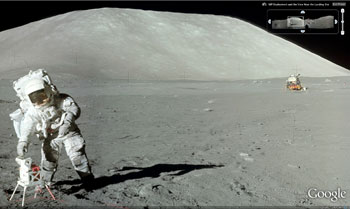Announcement
July 30, 2009
Today Google announced the removal of the “beta” label from its new interface for AdWords, the flagship advertising program that enables businesses of all sizes to find customers online. The new version of the AdWords web interface, the online application through which advertisers monitor and manage their online marketing campaigns, began public testing in November 2008 and is currently available to nearly all advertisers worldwide.
By listening closely to advertiser feedback and iterating rapidly, Google has redesigned the AdWords interface with the goal of making account management faster, clearer and more intuitive. To that end, campaign navigation is now simpler, data more accessible, and many new features have also been added.
Among the enhanced and new features are the following:
- Performance graphs: Quickly recognize trends in your account performance via custom graphs on every page
- Roll-up tabs: Identify top priorities by viewing and editing all keywords, placements or ads in an account on a single tab
- In-line editing: Make faster adjustments with single-click editing that doesn’t require loading a separate page
- Networks tab: Improve performance on the content network by looking at site-level statistics and making changes directly from your reports
- Filters: View only the keywords, ads or other parts of your account that meet or miss the performance thresholds you specify
- Spreadsheet editing: Make efficient bulk edits to keyword lists by using spreadsheets directly in your account
- Location extensions: Make ads locally relevant by including business addresses with your ads
- Custom alerts: Flag real-time changes in key metrics to stay on top of trends in your performance and quickly take corrective action
"The new AdWords interface has given us huge gains in efficiency,” said Alex Mann, CEO, ClickTime. “We’re spending less time navigating the system and more time making good decisions."
We encourage new advertisers who have yet to try online marketing to sign up for AdWords and check out the new features. Starting today, we’ll also begin requiring more existing advertisers to use the new interface exclusively.
While the changes do not affect how ads run, we hope that the updates provide advertisers with clearer insight into their ad campaigns and simpler ways to take action. We also remain committed to constantly improving our advertising offerings to help advertisers effectively manage their accounts. With the new AdWords interface infrastructure in place, we’ll continue to experiment, solicit feedback and introduce additional features over time – regardless of the new interface’s graduation from beta status.
To learn more about the new AdWords interface, visit www.google.com/adwords/newinterface/ or sign up for a free webinar session at sites.google.com/site/newinterfacewebinars/. You can also read more about this on our AdWords blog at adwords.blogspot.com/2009/07/new-interface-thursday-bye-bye-beta.html.
Google and Google AdWords are trademarks of Google Inc. in the United States and/or other countries. All other company and product names may be trademarks of respective companies with which they are associated.
Google Media Contact:
Deanna Yick
dyick@google.com
